Have you ever wanted to rank your business, but have no link-building strategy in mind?
In a world where links are one of the top ways to rank on Google, websites with 0 links have no chance of climbing top spots.
Acquiring backlinks is also a very hard thing since the Google spam guidelines forbid paying for links.
However, we found 9 strategies that can help you build local backlinks without getting penalized by search engines, or losing your website’s results.
Instead, our tactics have proven to get results over time, without costing anything.
What is local link building and why is it important?
Link building is a process where any website links to yours. This includes linking to your homepage or any other page that you have available for users.
The incoming links are also called backlinks. They are the backbone of any business and help rank pages based on Google’s unknown formula.
While you cannot measure the metrics and find, which domain is better than the other (since Google doesn’t tell you), websites like Ahrefs, Moz, and Semrush give you their own metrics.
For example, Ahrefs uses a metric called DR (Domain Rating). Based on a large number of factors and calculations, you can find the domain authority of any website on the web.
How many local links do I need to rank?
Depending on the category your local business falls under, there is a different of backlinks required to earn your rankings at the top.
However, the backlinks required to rank locally are not as much as in the global market. If we also take the referring domains into credit, you will have far less to worry about.
Since a single domain can send you hundreds of backlinks, there is not much power coming from them. However, taking a link or two from tens of domains can increase your rankability in the local SERP.
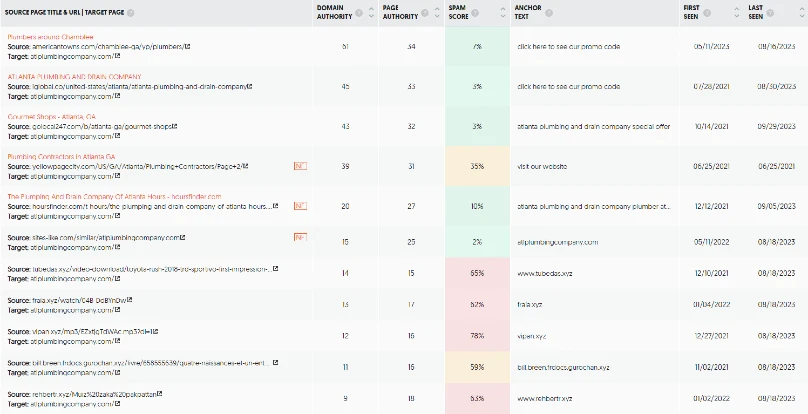
By doing free research with Ubersuggest, you can easily understand how many backlinks are required to earn your spot on the first page of Google and other search engines.
However, there is more to it than just getting the required number of websites pointing at yours.
Quality vs Non-quality Local Links
Before you start jumping into local link-building campaigns and seek results, you need to distinguish a good link from a bad one.
While most starters in the industry tackle websites with high DA/DR, that’s not the best-case scenario. In fact, not only you will not rank, but will also lose your current results.
As per the new Google Spam Guidelines, spammy domains are not only discounted from the overall ranking of a website but could also get you penalized.
For example, PBN websites and link farms. They have tons of backlink power and high DA/DR, but they don’t have traffic and a specific niche.
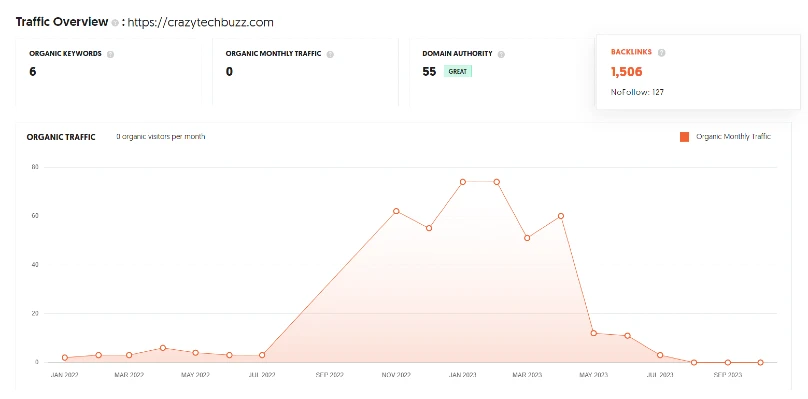
This website has a ton of backlinks and a great DA, however, it has no traffic, and will not bring any results to yours.
Also, a PBN website doesn’t have any ranking qualities, so the article you pitch to them, or purchase will never rank.
On the other side, a website like SEOBlog has good scores and could be in the same niche as you are.
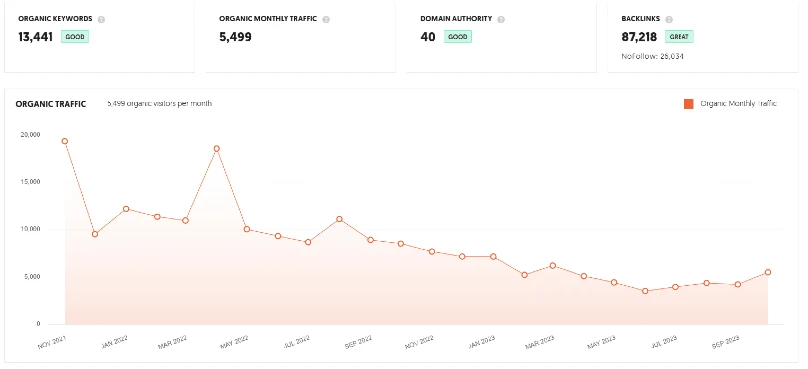
The ranking power coming from a website like SEOBlog can not only boost your results but will count as a highly authoritative link.
A few of the reasons why that might be possible are:
- You get a link from a strong DA 40+ website
- The website is earning good traffic monthly
- Has a wide variety of articles that can be interlinked with yours
The good part of receiving backlinks from such websites is that you boost your Authority, which plays a big part in the Google EEAT formula.
However, scoring a high backlink as SEOBlog or similar site may require your site to be more authoritative.
To start fresh with your local link-building strategy, trying to aim for websites with fewer results can be a link-winning process.
Such websites should include:
- Referring domains and backlinks difference lower than 1.75
- A spam score of 15 or lower
- Traffic must be at a minimum of 300 monthly users
- Domains linked should not be a large number (e.g. website with 300 monthly users and 10,000 backlinks).
- Have topically relevant content existing on their blog
- Be in the same niche as your website or have a correlation with your niche
By following these recommendations, you can acquire your first local links without worrying about getting penalized. These numbers are also the starting point for each of our websites.
How to Build Local Backlinks
Now that we have the needed information about backlink metrics, and which links are good for websites, we can lay out our strategies.
Here are our top 9 strategies to build local links without much effort, and with greater yield:
- Acquire links from Local Review Websites
- Get listed in Local Directories
- Find unlinked mentions
- Create a Google Business Profile
- Take part in local forums
- Create local case studies
- Create social media profiles
- Acquire links for your used images
- Purchase expired local domains
Acquire links from local review websites
Local review websites are the heart of local link building. Such websites can help you establish authority and trust at the same time.
By listing your website on local review sites like TrustPilot or Yellow Pages, you earn yourself a strong backlink. In most cases, there will be nofollow, but that should not discourage you.
The point is to try and acquire reviews from local searchers, who may be in need of your services.
Once you have provided your services, it is a great idea to ask for a review. Reviews will simply boost the trust in your brand since most people rely on them.

In fact, if you repeat this process a few more times, you will receive the opportunity to place a badge on your website. These budges represent the authority, and your reviews help you earn trust.
Having a few of these sites in your hand can tremendously improve your local business’ visibility, and earn your traffic over time.
Get listed in Local Directories
Local directories are a great way to start building your link profile. They are free to list yourself on and take less than 5 minutes to get you started.
If you are not sure what a local directory is, treat it like a phone book. It contains all the contacts in each area, structured to be found easily.
Local directories are the same, but instead of adding your name and phone number, you also add your website and its relevant information.
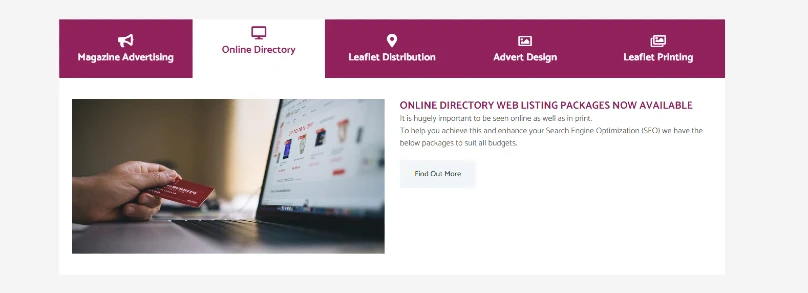
You can build unlimited links from directories, but my advice is to build 1 for every 100 monthly visitors on your website.
If you have less than 100 monthly visitors, it is best to list yourself on 2-3 directories and get your first links for the month.
Find unlinked mentions
Unlinked mentions are small quotes or larger chunks of text taken from your website and listed on news or media.
These websites are considered a gold mine since hundreds of users grasp the newest article published and rush to read it.
To find mentions of your business, you can proceed by opening your browser and typing the following “serpjar -site:serpjar.com” (change serpjar with your brand name and domain).
This query will search the web if your website has been mentioned, but not linked to.
In such cases, you can gather the contact details of each website, and ask them to create a linked mention.
Create a Google Business Profile
Google Business Profile is the strongest link you can acquire on your website. It’s the hardest, yet most rewarding website for local business owners.
A reason for that is the local pack. It consists of receiving a map search result in the organic SERP, ranking in the Maps SERP, and ultimately – services.
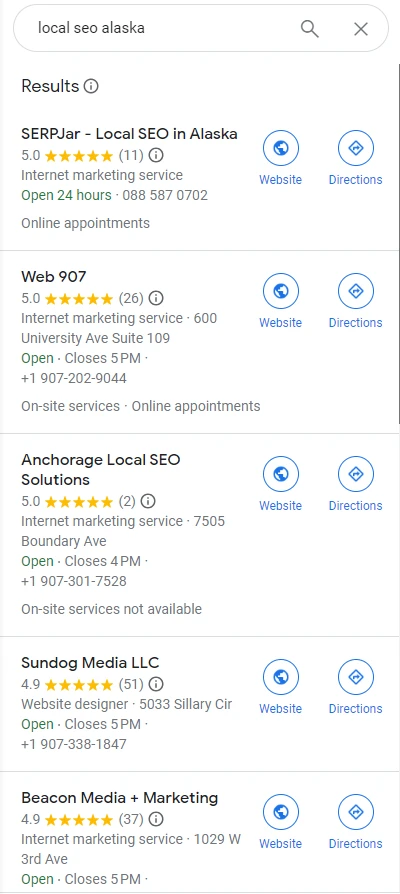
To acquire a link you will need to create a Google Business Profile and fill in all the information regarding your business. Once done, you will be asked to verify your listing, which can happen in various ways provided by Google.
When your profile has been completed and verified, you can start earning reviews and appear for more searches in the local SERP.
Take part in local forums
Local forums are a great way to find new leads and also diversify your backlink profile. By interacting with users in local forums, you get your name discovered easily.
Especially if you participate in forums, which reside with your area of expertise and distance.
This a very strong tactic, which most agencies and owners disregard, but for clients with little to no budget it helps them build foundational link profiles.
To start off with local forums, you will need to enter “Keyword Forum + Area”. For example “Plumbing Forum Alaska” gives us more than 10,700,000 results.
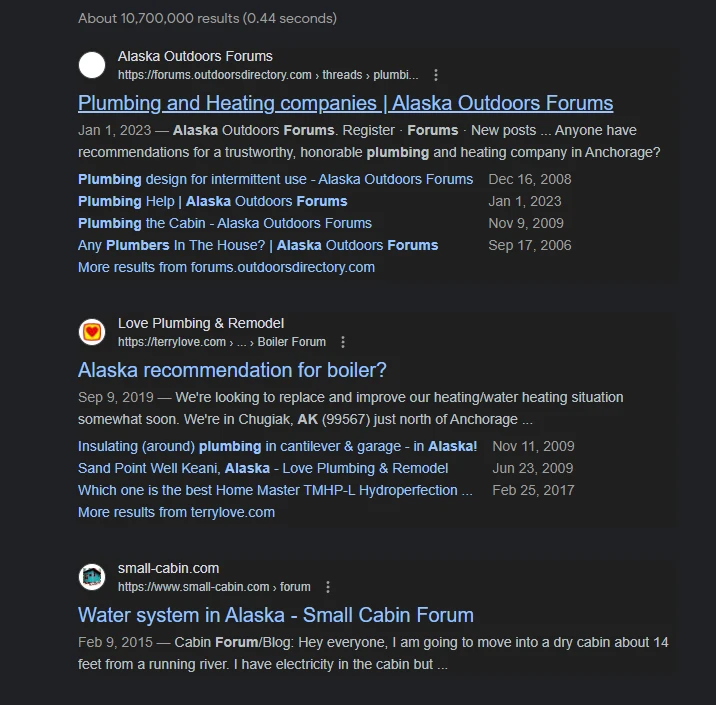
By playing with the keywords a bit, you can find more forums to participate in.
Click on the first 3 forums and register yourself. Don’t hurry to post any links to your website, but try to answer questions relevant to your field of expertise.
Once you start earning yourself a few recommendations from the forums, you can start mentioning your website.
Otherwise, people may think you are trying to advertise yourself and get quickly blown away.
Create Local Case Studies
Creating local case studies can provide valuable insights. By focusing on local businesses, organizations, or individuals, these case studies can offer practical and relevant examples.
They can also serve as a way to showcase success stories and solutions.
Additionally, local case studies can help you establish connections with other bloggers who are in your local area.
Ultimately, creating local case studies can be instrumental in driving positive change and promoting sustainable development at the local level.
Create social media profiles
One of the key steps in establishing this presence is to create social media profiles on platforms such as Facebook, Twitter, and LinkedIn.
By doing so, businesses are able to engage with their customers, build relationships, and promote products or services.
Additionally, social media helps businesses to showcase their brand, share relevant content, and attract potential customers.
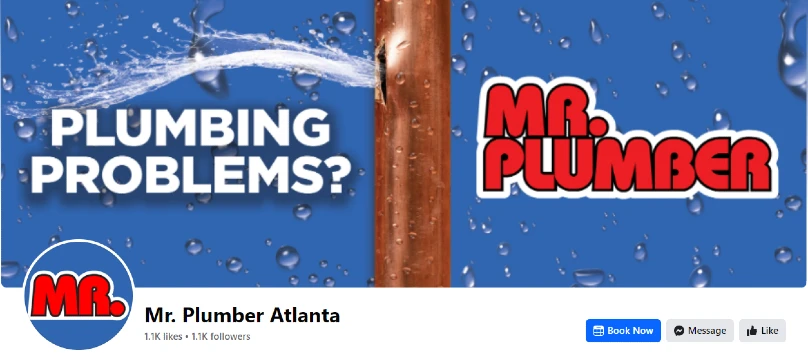
It also allows communication with customers to address concerns and gather feedback.
Creating social media profiles is a crucial component of its overall marketing strategy and can lead to long-term success.
Acquire links from your images
Image linking is the easiest way to get a link on your website. Not only that but getting links from images helps build your link profile.
In fact, it makes your link equity look more natural, and will not get you penalized by Google and other search engines.
To make this strategy work, you will need to open images.google.com and use the search by image icon.
Add any of the images on your website, and check if the same image was found on any other website.
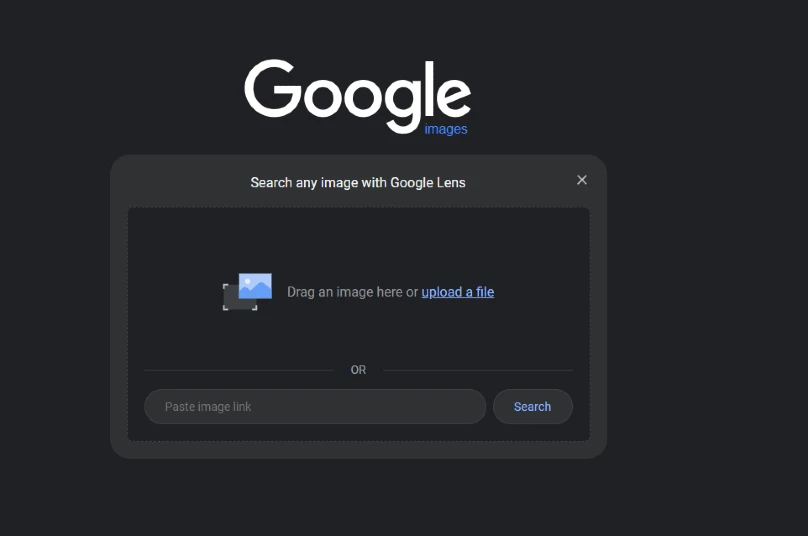
If you find one, save the website’s email address in a list. Once you have repeated this strategy a few times, create an outreach and ask these website owners to include a link in the image, that will point to your website.
In case they don’t want to link back to your website, you can easily request a takedown from Google, since you own the rights to the image.
However, keep in mind that this link-building tactic works only if you own the images. Stock images don’t count, as they can be purchased by more than 1 person, and are not counted as original.
Purchase expired local domains
By purchasing expired local business domains in your niche, you can quickly build credibility and trust within the local community.
This strategy can also help you bypass the lengthy process of building domain authority from scratch and can give you a head start in your local SEO efforts.
Additionally, by acquiring expired local business domains, you can potentially redirect traffic to your main website, increasing your online visibility and potential customer base.
However, it’s important to thoroughly research and evaluate these expired domains before purchasing, as they may have incurred penalties or have a negative reputation that could harm your brand.
